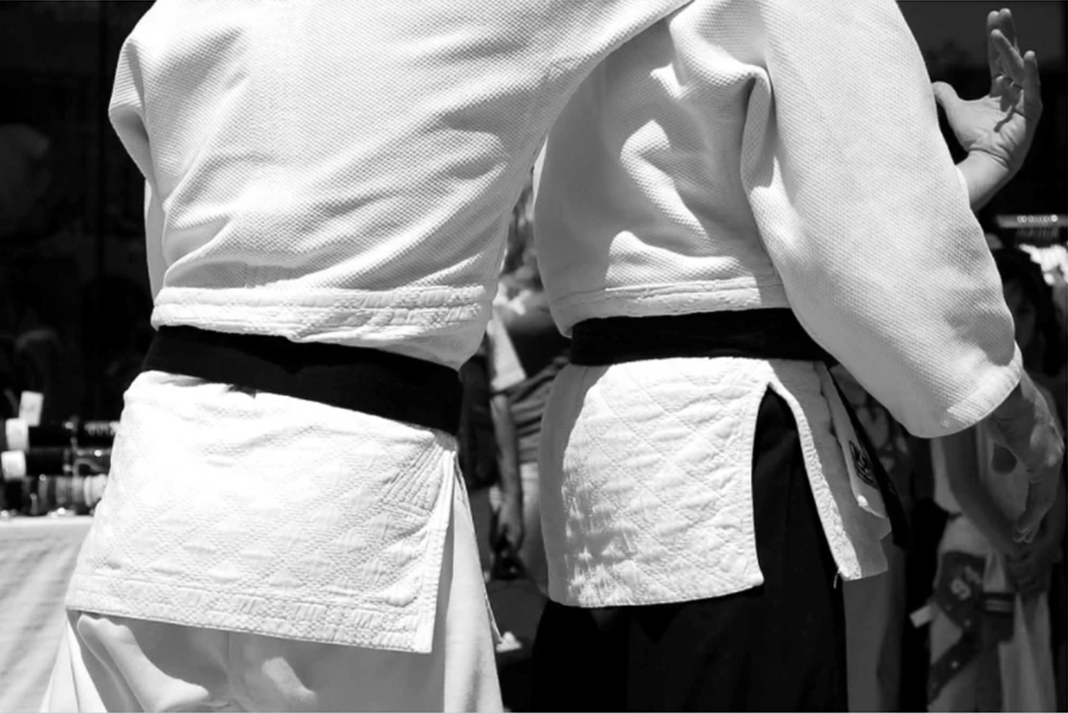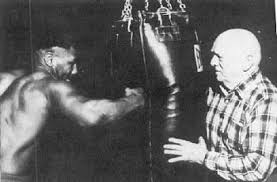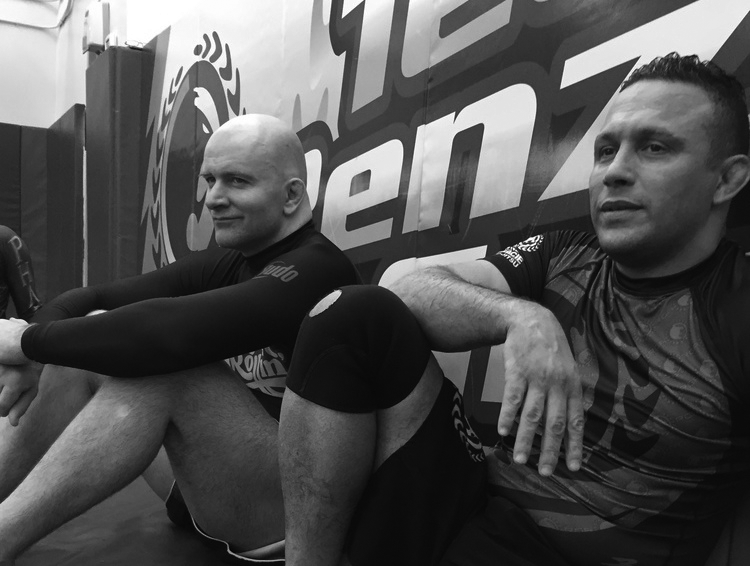It is common for many martial artists, especially those with experience, to come to a given practice with an expectation. Martial artist from all walks of life, and from all systems will have a predetermined notion of what is specific technique or training method should be and ultimately what it should achieve. Many will not even look past the external image in their assessment of a given practice. They simply stop there and do not try to understand why it may differ from their own experience or expectation of a similar method.
In this article I will talk about how to dislocate our expectation, so as to be able to view training methods, regardless of source, based on the given goal or objective and their efficiency at achieving it.
Leaving tradition
One of the biggest single sources of inhibition in maintaining an objective viewpoint is the adoption of specific tradition or dogma. It is understandable that, when we find training methods that impress us, we tend to view all other training methods through the lens of this newfound method. This is especially true of systems in the martial arts that promote themselves as special or unique, or to have some superior approach than the wider martial art community. I have seen this idea permeate the so-called internal martial arts as well as many who train aiki.
 Even though many of the individuals in question wouldn’t be able to apply the concepts to which they hold great value to a low-level sport fighter, they often remain convinced of the superiority of their particular brand of body method development or martial tradition. They have tricked themselves into the dogmatic belief that their method is superior and that all other methods lack the ‘correct’ way of doing things.
Even though many of the individuals in question wouldn’t be able to apply the concepts to which they hold great value to a low-level sport fighter, they often remain convinced of the superiority of their particular brand of body method development or martial tradition. They have tricked themselves into the dogmatic belief that their method is superior and that all other methods lack the ‘correct’ way of doing things.
In fact, I too once fell into this trap and I understand why people go all in with certain ideas. The power and skill wielded by certain internal martial artists or experts can be shocking and convincing! Then we layer on the stories of old masters and their fantastical feats, students will contrast those stories with their teachers high skill and think “Yeh I can see that would be possible after enough training!”. Ultimately these people then attach their own training ideals to these icons of a specific dogma. In the event that a master from their school gets beaten up by some mediocre martial artist, the answer is always the same “Yeh that guy wasn’t doing it right, he didn’t get the real stuff”. Thus the cycle perpetuates and the blinders stay firmly fixed.
However, what is often missed in the discussions on this method or that, is that more often than not the greatest masters in an arts history were people that moved away from traditional thinking. Many of the best martial artists that I have met were the outliers and not those responsible for maintaining the tradition. This is at odds with the common idea that the “inheritor” or “Chief disciple” is the individual with the greatest skill in a system. Instead, it is often those around the inner circles, whom are free to explore without fear of losing the systems essence that turn out to be the innovators, often with the most interesting skill sets.
And so the first way to dislocate our expectation is to remove the layer of tradition or expectation of correct, or right, techniques. Instead, beginning to view individual methods or approaches on their own merit, from their results and their claims.
Does a specific training method produce the results that it claims?
That question does not contain any context from any other source, it is a standalone question and does not need more context. Train yourself to view information in this way and it will open you up to the possibilities of exploring your own personal methodologies.
Viewing with eyes to see
To do this, firstly we have to develop the ability to view subjects clearly. As we have just learned, this is often muddied by tradition and by preconceived notions of what something ‘should be’. But with specific training to recognise when we are fooling ourselves as to the purpose of a given method, we are able to begin to understand a method based on its merits. I called this viewing with eyes to see.
It is well known that humans have a tendency to view various actions or events through their own clouded perception. We need only look at the recall of witnesses in as criminal case to see how the same events can appear different to different individuals. And we are no exception when viewing training methods or martial arts, we are infused with our biases and will always begin to assess things based on those basic in built assumptions. In order for us to escape this we must have a robust system of assessment. Ultimately, it does not matter where or a particular method originated, who created it, when and via what tradition … all that matters is does it work for the stated goal.
And so the first thing we can do is ask that very question! Does this method produce the results that it claims. If the answer to that question is no then we can immediately discount the method, if the answer to the question is yes then we know the method works. Again, it does not matter where the method come from provided that it works.
 Secondly, we can ask the question of ourselves, “what is most important about a given method?”. Are we more concerned with whom the method originated or are we more concerned with the effectiveness of the method at producing results. It seems silly to say this because for most people they want results not no knowing the history of the technique, in almost all aspects of life. But as I am sure you know already, the Martial Arts are a weird realm of practice.
Secondly, we can ask the question of ourselves, “what is most important about a given method?”. Are we more concerned with whom the method originated or are we more concerned with the effectiveness of the method at producing results. It seems silly to say this because for most people they want results not no knowing the history of the technique, in almost all aspects of life. But as I am sure you know already, the Martial Arts are a weird realm of practice.
But consider, if learn to drive a car would you even think to ask the instructor what lineage they have in Car driving tuition? Who I was their teachers teacher, where did they live, who did they learn from etc. However in the Martial Arts, particularly those with a traditional background, often much more weight is placed on the history of the instructor rather than the methods or techniques that they present.
Although this is somewhat of a silly comparison it does highlight the point. But it is worth saying that knowing the history of your instructor does actually have merit, when we are talking about engaging in combat skills. You do not want to walk into a school where the instructor has no idea what they’re doing after all!
But the point here is that it can also prove to be a trap where, over time, we begin to value history of a technique or method over its effectiveness. This process is partially to blame for the degradation of many traditional methods into nothing more than simple movement techniques. So we must strive to view Techniques based on their merit and this will us to understand how they may be relevant to us as individual practitioners.
Student progress
Another excellent way to assess techniques or methods is to look at the students and see how much of the teachers skill they possess. In all martial arts we see that there are a few top students, this is very common. However, when considering the effectiveness of a method we should also be able to see that the techniques are providing benefit to all students and not just the top 1%.
This is a very good way to assess given method because it points towards the general general capability of the method to produce results, even outside of the instruction of the head coach. All methods should, in fact, be able to standalone regardless of the coach, if they are in fact well designed. Of course an efficient coach and teacher can improve the way in which a method is received but if the training protocol is correct then the student cannot help but progress. Think of a simple callisthenics set, is a coach needed to get results from this practice? No, the methods are proven to work on their own. MartialBody strives to have the same effect. I want everyone to get huge benefits whether I am there or not!
 There is a tendency especially in the martial arts to focus on the head of the school. This is another thing that can often distract from the true merits of the methods being presented. People become obsessed with what the teacher can do rather than what the method can produce and so they missed the wood for the trees. A great example of this is the Brazilian jujitsu instructor John Danaher.
There is a tendency especially in the martial arts to focus on the head of the school. This is another thing that can often distract from the true merits of the methods being presented. People become obsessed with what the teacher can do rather than what the method can produce and so they missed the wood for the trees. A great example of this is the Brazilian jujitsu instructor John Danaher.
If we were to take the approach of observing John as a Brazilian jujitsu exponent we would see that he is highly capable but nowhere near the level of the elite athletes of today. In fact he has never been at the elite level of athletic competency due to a number of serious injuries with his hips and knees. These injuries meant that John could never be an Example of an apex and jujitsu athlete.
However, Johns method and his approach to instruction have reliably produced some of the best jujitsu and MMA athletes on the planet. It is the combination of his methodology and his coaching skills that have produced these exemplary athletes. In this example Johns personal skill is irrelevant, it is in fact, his ability to coach and the methodology that he has created that has produced the opportunity to become expert in his methods. In the example of John we see that the teacher themselves and their personal skill set is secondary to their ability to coach and the methodology with which they help people progress.
His example is also a brilliant one for the observation of known techniques. John isn’t teaching any “new” techniques and it would be easy to just look at them on the surface and think “I have seen that before”. But you would be missing the entire point were you to do so.
Conclusion
This article may rub some people up the wrong way because it exposes some of the biases and preconceptions that are abundant in martial arts. Because we devote so much time to a given method, we may form opinions in our mind that convince us that our particular brand of martial art or body method training is the best for any and every situation. But the truth is much more nuanced, the reality much more personal and the objective view often much harder to accept. Hopefully this article has given you some ideas as to how to recognise when your viewpoint maybe skewed by your preconceived notion and help you to dislocate your expectation when viewing new material.